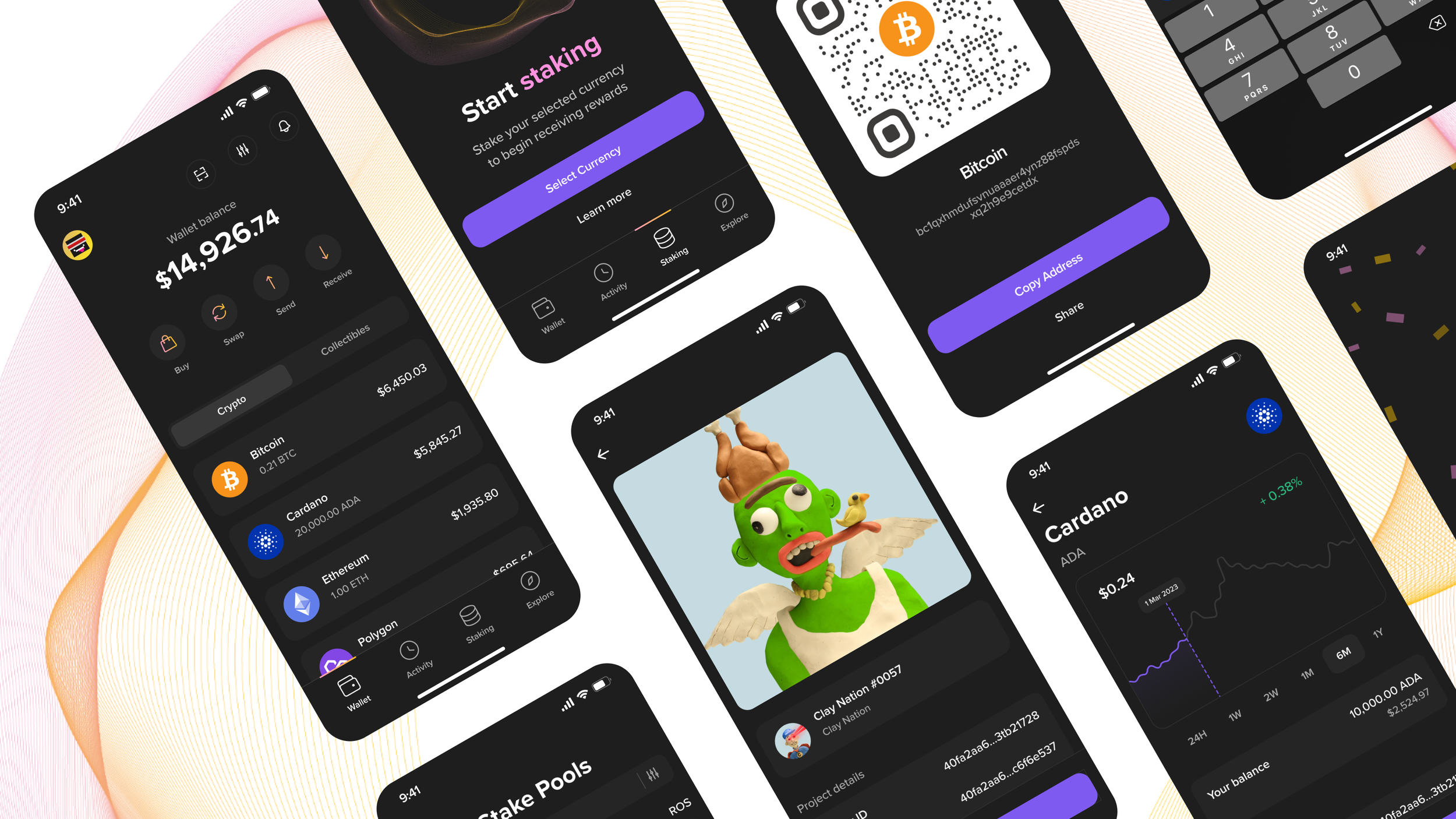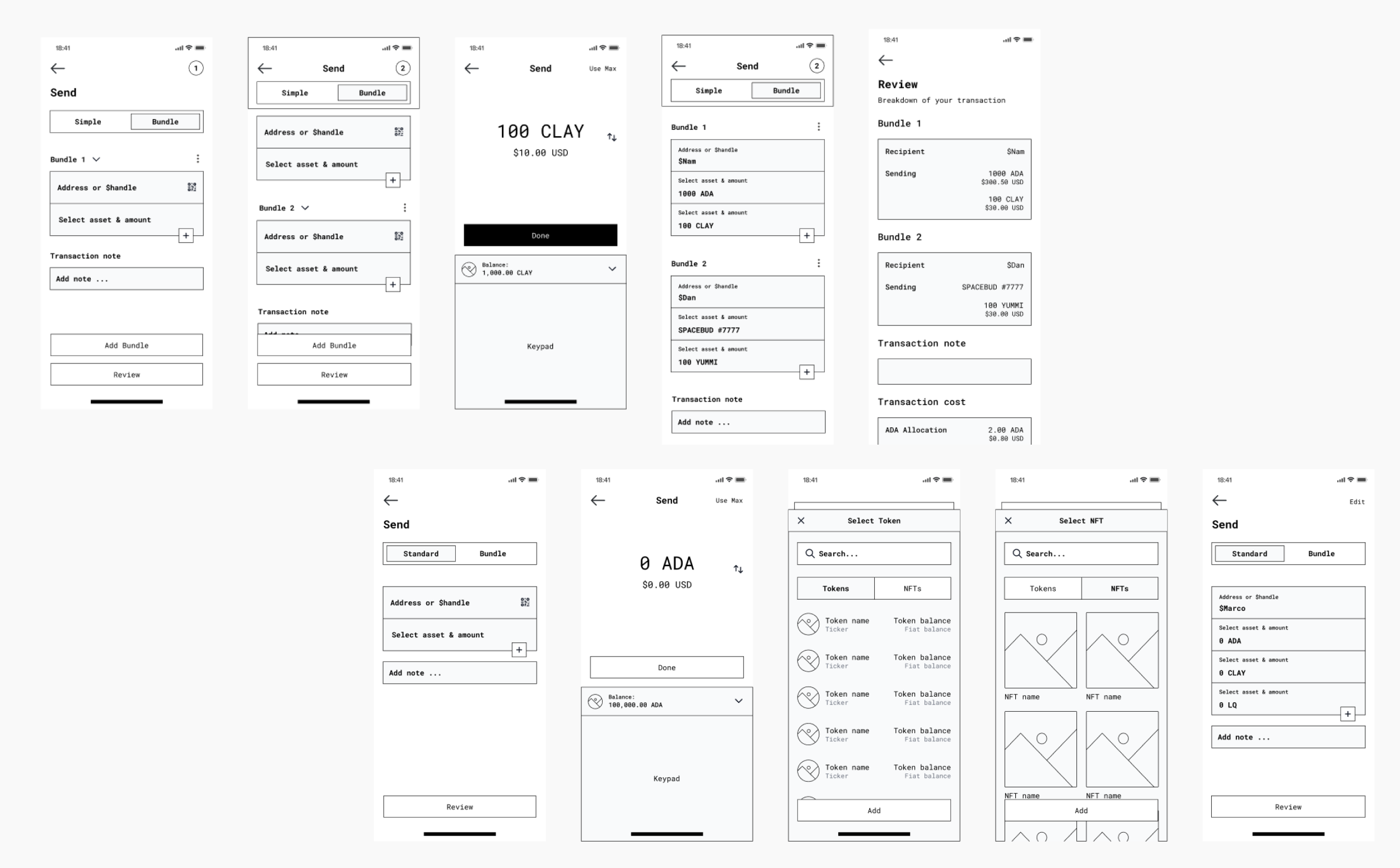
Introduction
The necessity of a mobile application was recognised to widen Lace's accessibility in response to user demand. Comprehensive research, iterative design, and user testing were employed to create a seamless, user-oriented mobile experience.
The Problem
The absence of a mobile application for Lace hinders user access and limits engagement with the platform. Users expressed a desire for a mobile version to increase convenience and facilitate access to Lace's features. The challenge involved designing a mobile application that maintained the core functionality and user experience of the web version, yet adapted to a more compact form factor.
Research and Discovery
Thorough research was undertaken to understand user preferences and behaviours related to mobile applications in the crypto space. This research included market analysis, competitor assessment, user interviews and surveys. Findings highlighted the importance of a user-friendly interface, legible navigation, and optimised mobile performance. Feedback from Lace's web version users provided valuable insights into desired features and improvements.
Design and Development
The design and development process of the Lace mobile application consisted of several stages. From the careful planning of information architecture to ensure intuitive navigation, to the creation of wireframes and prototypes for early user feedback and design improvements. If everything is done correctly, the design becomes invisible - a guiding principle throughout this phase.
Innovation and Challenges
A unique facet of Cardano is the UTXO (Unspent Transaction Output) model. This model provides users with the capability to dispatch multiple assets to a single recipient within one transaction, or even multiple assets to multiple recipients within a single transaction, all while paying a single transaction fee. This feature sets Cardano apart from other blockchains, providing users with a powerful tool for transaction management and reduced fees.
Incorporating this functionality into the mobile wallet posed a significant challenge. Not only did we have to accommodate this functionality but also do so in a manner that remained intuitive and straightforward for users. We aimed to maintain a simple and minimal user experience, necessitating innovative thinking and a creative approach to design.
Inspiration was sought from other industries to design this flow. The objective was to facilitate both singular and multiple transactions within the app, whilst keeping the interface clean, user-friendly, and uncomplicated. This approach led to a breakthrough in the design, setting a new standard for user experience in blockchain wallets.
By tackling this challenge head-on, we created an innovative solution that utilises the unique capabilities of Cardano whilst preserving a commitment to a seamless user experience. This was a pivotal step in the development of the Lace mobile, showcasing the our dedication to user-centric design and innovation.
User Testing and Iterations
User testing was a crucial step in refining the Lace mobile application. Testing allowed for the identification of areas of difficulty, enhancement of the application's interface, and streamlining of user flows. Feedback was incorporated into iterative design and development cycles, resulting in a more refined and user-friendly mobile application.
Results and Impact
While the mobile application is still under development, the iterative design process and user testing have already brought about significant improvements. The Lace mobile application now offers enhanced accessibility, enabling users to engage with the platform on the go. The user-friendly interface and seamless navigation are expected to increase user engagement and satisfaction.
Video of the built prototype using Protopie which covers the current version of Lace and the Multi-chain direction






